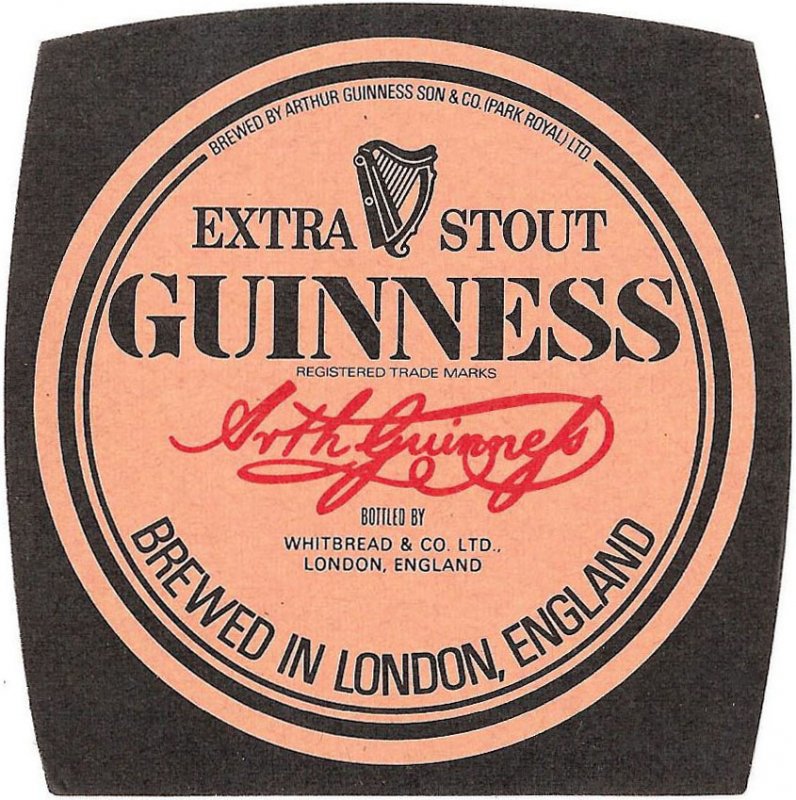Includes information for Guinness Park Royal
Planned brewpub
16 Shelton Street WC2H 9JL (Westminster)
guinness.com/en-gb/our-craft/old-brewers-yard
Planned for: 2024
Closed brewery
Lakeside Drive, Park Royal NW10 7HQ (Brent)
guinness.com
First sold beer: 1937 (at this site)
Ceased brewing: 2005 (at this site, still brewing outside London)
Guinness looks set to start brewing in London again, though on a much smaller scale than at its former Park Royal site, closed in 2005 and subsequently demolished, as explained below.
The new site has an even older brewing history: the Woodyard Brewery, later known as Combe & Co, on Shelton Street near Seven Dials in Covent Garden WC2, was likely founded in the 1640s. It became a major porter producer and was at one point London’s fifth biggest brewery. It closed in 1905 after merging with two other breweries to form Watney Combe Reid, but several historic buildings still stand along Shelton and Earlham Streets. Appropriately enough, the Watney group ended up in the hands of Grand Metropolitan, later a co-founder of Guinness owner Diageo.
The company announced on 31 January 2022 that it’s investing £75 million to create a microbrewery, bar-restaurant, shop, training centre, events space and “culture hub” called Guinness at Old Brewers Yard. Plans were delayed by planning issues but permission has now been granted and the site should open in 2024.
Guinness in London

Guinness is of course an Irish brewery but its early history was strongly shaped by London brewing at a time when Britain ruled Ireland. Arthur Guinness had a share in a brewery in Leixlip/Léim an Bhradáin, County Kildare, from around 1755, and in 1759 set up his own brewery in the Irish capital, Dublin/Baile Átha Cliath, famously taking out a 9,000 year lease on a site at St James’s Gate where the brewery still operates today.
Originally the simple ale styles of the day were brewed, but in 1778, Guinness began producing porter in direct competition with imported London beers which were gaining in popularity in Dublin. It was likely not the first Irish brewery to do so but ultimately the most successful.
By the mid-19th century Guinness was one of the biggest brewers in the British Isles, successfully transforming porter and stout (the latter originally simply a stronger porter), into something characteristically Irish. The fame of Irish stout, and of Guinness in particular, spread across the world with the Irish diaspora, making it one of the first global brands, and by 1914 St James’s Gate was producing an astonishing 4.34 million hl a year.
By the 1930s, with Dublin now the capital of an independent state and English porter heading inexorably towards extinction, mainland Britain was one of Guinness’s most important export markets. While customers in the northwest and Scotland were easily reached by ship from Dublin, the south of England was less accessible, so Guinness added a satellite brewery in London.
The site chosen was Park Royal in Willesden, a former Royal Agricultural Society showground in the western suburbs on the A40 trunk road which was then being redeveloped as an industrial zone. Guinness built a massive state-of-the-art facility, designed in art deco style by George Gilbert Scott, which when it opened in 1937 for a while restored to London the long-lost distinction of being home to the biggest brewery in the world. It turned out to be last new brewery in the capital before the arrival of modern microbrewing in the late 1970s. Park Royal was pasteurising and pressurising its draught beer by the 1950s but its standard bottled stout was bottled conditioned until 1994.
Unlike other historic industrial British brewers, Guinness never pursued a policy of acquiring a pub estate, instead relying on the distinctiveness of its beer and the strength of its brand to ensure it became a ‘must-stock’ in pubs owned by other brewers. For decades it often strengthened its partnerships with potential competitors by selling its beer in bulk for other brewers to bottle for sale in their own outlets.
In 1997, Guinness merged with hotel, catering and spirits group Grand Metropolitan, which had sold off its own brewing interests in Watney (see Stag Brewery) six years previously, to form Diageo, one of the biggest drinks companies in the world. In 2005, with improvements at St James’s Gate, the London plant was deemed surplus to capacity and closed down, with production for the UK market centralised in Dublin. Despite its importance, the Park Royal brewery building was rejected for listing by English Heritage and much of it was demolished, among some controversy, in 2006. Diageo’s offices still occupy part of the site while the rest is now used as homes, business parks and green space.
Updated 4 September 2024.






great for the “old school” but why can we not get the alcohol free brew in any of the local supermarkets ?
You will need to ask Guinness about that, Dave — this isn’t their official site.